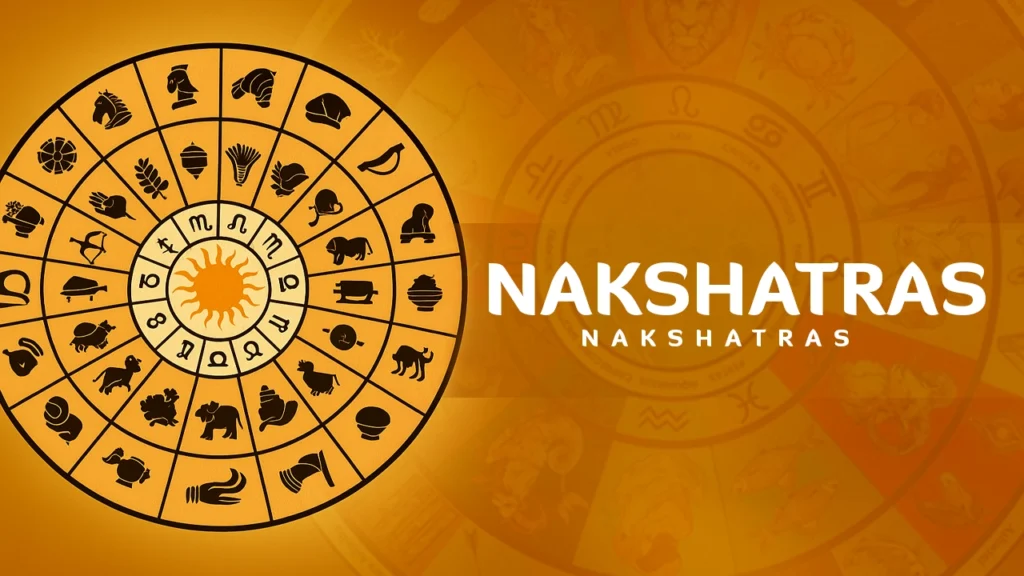Introduction to Nakshatras
Have you ever wondered about the intricate cosmic dance that influences our lives? Welcome to the fascinating world of Nakshatras, the celestial roadmap that has guided seekers for millennia. Nakshatras, often referred to as lunar mansions, are a fundamental aspect of Vedic astrology that offers profound insights into our personalities, destinies, and the cosmic rhythms that shape our existence.
In this comprehensive guide, we’ll embark on a journey through the stars, unraveling the mysteries of Nakshatras and discovering how these celestial signposts can illuminate our path in life. So, buckle up and prepare for a cosmic adventure that will transform your understanding of the universe and your place within it!
Read Also: Astrology Predicts Global Shifts Toward Equality
The 27 Nakshatras: An Overview
Origins and Mythology
The concept of Nakshatras dates back to ancient Vedic times, with roots deeply embedded in Indian astronomy and mythology. These 27 (sometimes 28) stellar constellations are like cosmic waypoints that the Moon traverses in its monthly journey across the night sky. Each Nakshatra has its own unique story, often tied to gods, goddesses, and legendary figures from Hindu mythology.
For instance, the Nakshatra Rohini is associated with the beautiful wife of the Moon god, while Ardra is linked to the fierce storm god Rudra. These mythological connections imbue each Nakshatra with distinct energies and characteristics that influence those born under their celestial canopy.
Significance in Vedic Astrology
In Vedic astrology, Nakshatras play a crucial role in determining an individual’s cosmic blueprint. They offer a more nuanced and detailed analysis compared to the 12 zodiac signs of Western astrology. By considering the precise Nakshatra placement of celestial bodies at the time of birth, astrologers can gain deeper insights into a person’s inherent nature, life purpose, and potential challenges.
Understanding the Nakshatra System
Lunar Mansions and Zodiac Signs
Think of Nakshatras as a celestial neighborhood with 27 houses, each spanning 13°20′ of the zodiac. The Moon, our cosmic neighbor, visits each of these houses during its monthly orbit around the Earth. This lunar journey through the Nakshatras creates a subtle yet powerful influence on our emotions, instincts, and daily experiences.
While the 12 zodiac signs provide a broader framework, Nakshatras offer a more refined and specific energetic imprint. It’s like zooming in on a map – you get to see the intricate details that make each celestial neighborhood unique.
Read Also: Astrology for Finding Joy in a Stressful Career
Ruling Deities and Their Influence
Every Nakshatra is governed by a specific deity, each with its own personality and domain of influence. These divine beings infuse their respective Nakshatras with particular qualities and energies. For example, Ashwini is ruled by the Ashwin twins, divine physicians known for their healing abilities. Those born under this Nakshatra often possess natural healing talents or a strong interest in health and wellness.
Understanding the ruling deity of your birth Nakshatra can provide valuable insights into your innate gifts, challenges, and life purpose. It’s like having a cosmic mentor guiding you through life’s journey.
The Four Main Categories of Nakshatras
Deva (Divine) Nakshatras
Deva Nakshatras are associated with divine and benevolent energies. People born under these Nakshatras often exhibit noble qualities, spiritual inclinations, and a natural ability to lead and inspire others. Some examples of Deva Nakshatras include Pushya, known for its nurturing energy, and Hasta, associated with skilled craftsmanship and healing.
Manusha (Human) Nakshatras
Manusha Nakshatras represent human qualities and experiences. Those born under these Nakshatras tend to be practical, grounded, and adept at navigating the complexities of human relationships and society. Nakshatras like Rohini and Magha fall into this category, often bestowing their natives with charm, creativity, and leadership abilities.
Rakshasa (Demonic) Nakshatras
Don’t let the name scare you! Rakshasa Nakshatras are not inherently negative but rather represent intense, transformative energies. People born under these Nakshatras often possess great strength, passion, and the ability to overcome significant challenges. Ardra and Jyeshtha are examples of Rakshasa Nakshatras, associated with powerful, sometimes turbulent energies that can lead to profound personal growth and transformation.
Animal Nakshatras
Some Nakshatras are associated with animal energies, embodying the instinctual wisdom and unique qualities of different creatures. For instance, Ashwini is linked to horses, symbolizing speed and vitality, while Pushya is associated with sheep, representing gentleness and nurturing qualities. These animal associations offer additional layers of meaning and insight into the characteristics of each Nakshatra.
Nakshatras and Personal Characteristics
Personality Traits
Your birth Nakshatra acts like a cosmic fingerprint, influencing various aspects of your personality. It can shed light on your emotional tendencies, intellectual inclinations, and even your approach to life’s challenges. For example, those born under Bharani Nakshatra are often known for their determination and pioneering spirit, while Chitra natives tend to be creative and attracted to beauty and aesthetics.
Career and Life Path
Nakshatras can offer valuable guidance when it comes to choosing a career or life path. Each Nakshatra is associated with certain professions and areas of expertise. If you’re born under Anuradha, you might excel in diplomatic roles or counseling, thanks to your natural ability to create harmony and balance. Understanding your Nakshatra can help you align your career choices with your innate talents and cosmic purpose.
Relationships and Compatibility
In matters of the heart, Nakshatras play a significant role in determining compatibility between partners. Vedic astrologers consider the Nakshatra compatibility, known as Kutas, when assessing the potential for harmonious relationships. Some Nakshatras naturally complement each other, while others may present challenges. However, remember that cosmic compatibility is just one factor in the complex equation of human relationships.
Read Also: Astrology for Turning Career Pressure into Success
Nakshatras in Daily Life
Auspicious Timings and Activities
In Vedic traditions, the transit of the Moon through different Nakshatras is considered when planning important activities or ceremonies. Certain Nakshatras are deemed more auspicious for specific undertakings. For instance, Pushya Nakshatra is often considered favorable for new beginnings and investments, while Revati is auspicious for spiritual practices and charitable activities.
Remedies and Rituals
Vedic astrology offers various remedies and rituals associated with each Nakshatra to harmonize its energies and mitigate potential challenges. These may include wearing specific gemstones, reciting mantras, or performing charitable acts. For example, those with a challenging Moon in Ardra Nakshatra might benefit from wearing a blue sapphire or practicing meditation to calm the intense energies associated with this constellation.
The Role of Nakshatras in Predictive Astrology
Nakshatras are not just about understanding your inherent nature; they also play a crucial role in predictive astrology. Vedic astrologers use various Nakshatra-based predictive techniques to forecast future trends and events. The Vimshottari Dasha system, which divides life into planetary periods based on the birth Nakshatra, is a powerful tool for timing significant life events and transitions.
Moreover, the current position of transiting planets in relation to your birth Nakshatra can offer insights into ongoing influences and potential opportunities or challenges. It’s like having a cosmic weather forecast to help you navigate life’s ever-changing tides.
For interesting astrology-related videos, subscribe to us on YouTube
Conclusion of Nakshatras
Nakshatras offer a profound and nuanced approach to understanding ourselves and our place in the cosmic tapestry. By delving into this ancient wisdom, we gain access to a rich source of self-knowledge and guidance. Whether you’re a seasoned astrology enthusiast or a curious newcomer, exploring your Nakshatra can open up new dimensions of awareness and personal growth.
Remember, while Nakshatras provide valuable insights, they don’t dictate our fate. We always have the power of free will to shape our destinies. Use the wisdom of Nakshatras as a tool for self-reflection and growth, but never let it limit your potential or discourage you from pursuing your dreams.
As you continue your journey through life, may the starry wisdom of Nakshatras illuminate your path, helping you align with your highest purpose and navigate the cosmic currents with grace and understanding. After all, we are all made of stardust, and understanding our celestial heritage can empower us to shine our brightest in this vast, beautiful universe.
FAQs of Nakshatras
- How is my birth Nakshatra determined?
Your birth Nakshatra is determined by the precise position of the Moon at the time of your birth. An experienced Vedic astrologer can calculate this for you using your birth details. - Can my Nakshatra change over time?
No, your birth Nakshatra remains constant throughout your life. However, the influences of transiting planets through different Nakshatras can affect you in various ways. - Are some Nakshatras considered more fortunate than others?
In Vedic astrology, each Nakshatra has its own strengths and challenges. What matters most is how well you understand and work with the energies of your birth Nakshatra. - How can I use Nakshatra knowledge in my daily life?
Understanding your Nakshatra can help you make more informed decisions about career choices, relationships, and personal growth. You can also use Nakshatra-based timing for important activities. - Is Western zodiac sign compatibility the same as Nakshatra compatibility?
No, Nakshatra compatibility (Kutas) is a distinct system from Western zodiac sign compatibility. It offers a more detailed analysis based on the 27 Nakshatras rather than the 12 zodiac signs.


